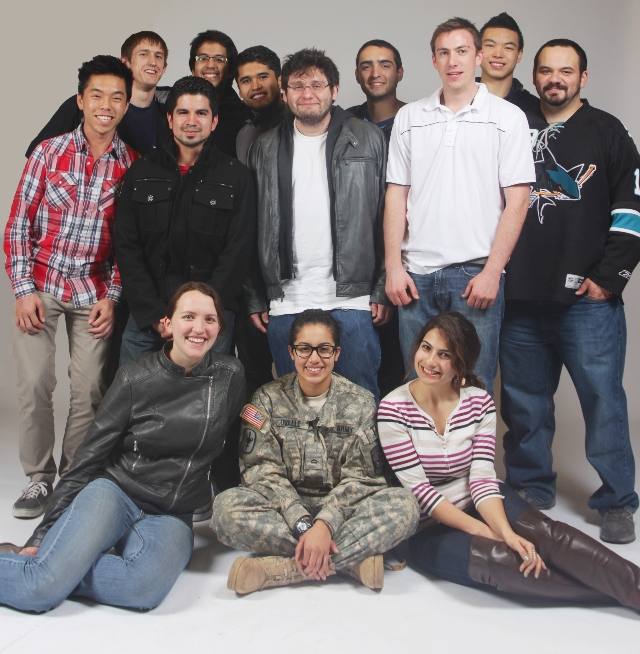A popular inspirational phrase suggests people “shoot for the moon,” but that’s not far enough for Eclipse Rocketry. This interdisciplinary group of UC Davis students has taken on the challenge of making possible a manned mission to Mars.
Ben Holmquist, a fourth-year mechanical and aerospace engineering major, captains a team of over 20 members of various majors and ages, all with at least one thing in common: their interest in space and rocketry. This interest has inspired each of the members to come together in pursuit of designing a mission plan to send human beings on a trip around Mars for the first time.
Holmquist said that this is part of an international competition put on by a foundation called Inspiration Mars.
“They’re one of the few private foundations that is trying to raise funding and create a mission design for a private manned mission to Mars,” Holmquist said.
The foundation’s goal is to raise money and design a plan to send a pair of humans to fly by Mars in a 501-day mission in early 2018, an important time period for the probability of a successful mission.
“It’s all about alignment of the planets really. In 2018, it’s the absolute ideal alignment for this kind of mission. It’s the shortest way you can go to Mars and back,” Holmquist said.
The time limit is a major factor in the planning process, which is why the team only has until March 2014 to write a 50-page comprehensive mission plan and submit it for judging. But for this fairly new team at UC Davis, the time crunch is nothing new.
“Last year we participated in the NASA USLI competition, which is the University Student Launch Initiative, where university teams across the nation go to Huntsville, Alabama, [where] everyone basically designs, fabricates and flies a high-powered rocket. It’s all built and designed from the ground up. It was a really rushed time schedule because the club kind of came about halfway through the project,” Holmquist said.
According to Alejandro Pensado, a third-year mechanical and aerospace engineering major and vice president of Eclipse Rocketry, the team had a short time to come together and finish their rocket for their first competition, but impressively managed to pull it off.
“Getting there in itself was a victory. The way the project was organized was to mimic NASA’s business plan. It starts with a proposal, your idea gets picked up and then you have a series of reports you have to do to make sure your design is going to be safe, it’s going to work, you’re sticking with schedule, cost and so forth. Every time you do that you give a presentation to some NASA engineers, then you get approved and you move on to the next phase. So there are teams that don’t pass those phases,” Pensado said.
But Eclipse Rocketry did pass, and they successfully launched their rocket in the competition. The team chose not to gear up for another USLI competition when Inspiration Mars’ mission plan arose as an opportunity.
Their ability to work well together under pressure and time constraints has paid off in big ways with their current competition. Holmquist emphasized the individual efforts of the team, and their ability to bring everything together. With people working on everything from communications and launch systems to life support and mental health, Holmquist said that cohesion between the sections is a priority.
“Basically, there are nine large components of the mission that we think deserve individual attention. Before winter break everyone had written their own independent report and analysis on their section,” Holmquist said. “Every section met with varying success, everyone had a report, and everything is on track to come together to be, we think, a very successful and reasonable mission plan.”
Though the foundation will judge the mission as a whole, any unique and helpful elements of the individual sections might be used in the foundation’s final mission.
“I think there’s some really cool stuff in our report that might not be in anyone else’s, so hopefully we’ll give them some thoughts, and then if they get their funding together and eventually do this, we will have contributed to a really great scientific achievement as college students,” Holmquist said.
Molly Townsend, a second-year grad student working on a PhD in biomedical engineering, is in charge of the “human” element of the project. She pointed out the trade-offs between each of the components, and the importance of communication.
“Everything has its sort of trickle down, that’s why everything in this club is focused on communication between the different sections,” Townsend said.
On the subject of trade-offs, Holmquist, Pensado and Townsend all commented on the time commitment for the project, and compared it to having one or even two extra classes. They said balancing time was difficult but not impossible.
“As far as we know, nobody failed any classes,” Pensado said.
Overall, they all said they found their work on the project very educational. Townsend said her part in it has helped with her dissertation, as most of her work focuses on the problem of the loss of bone mass experienced by astronauts in space.
Pensado said he doesn’t believe there is a single class that teaches the variety of subjects he’s learned about in his time in the competition.
“After this, I know a good amount about every single part of a mission design. I can have a conversation with someone that is an expert in this field now and know what I’m talking about, know the problems you’re gonna run into, some of the solutions and the current state of technologies. It’s been the single most educational thing that I’ve done in school, and also the most motivational thing. For me, it’s been an extremely positive experience,” Holmquist said.




